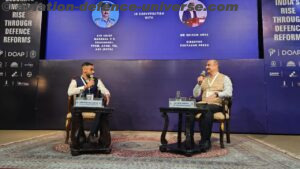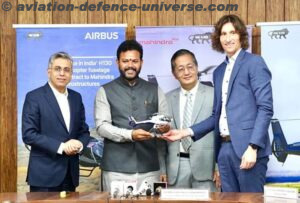
By Sangeeta Saxena
New Delhi. 15 July 2019. 1.51 AM. The countdown to Chandrayaan 2 has begun. In an hour India’s lunar mission will go where no country has ever gone before — the Moon’s south polar region. It will be a day of many firsts for ISRO and India. It will be the 1st space mission to conduct a soft landing on the Moon’s south polar region, 1st Indian expedition to attempt a soft landing on the lunar surface with home-grown technology, 1st Indian mission to explore the lunar terrain with home-grown technology and 4th country ever to soft land on the lunar surface. The launch of Chandrayaan-2 onboard GSLV MkIII-M1 is planned on July 15, 2019 at 02.51 Hrs from Sriharikota.
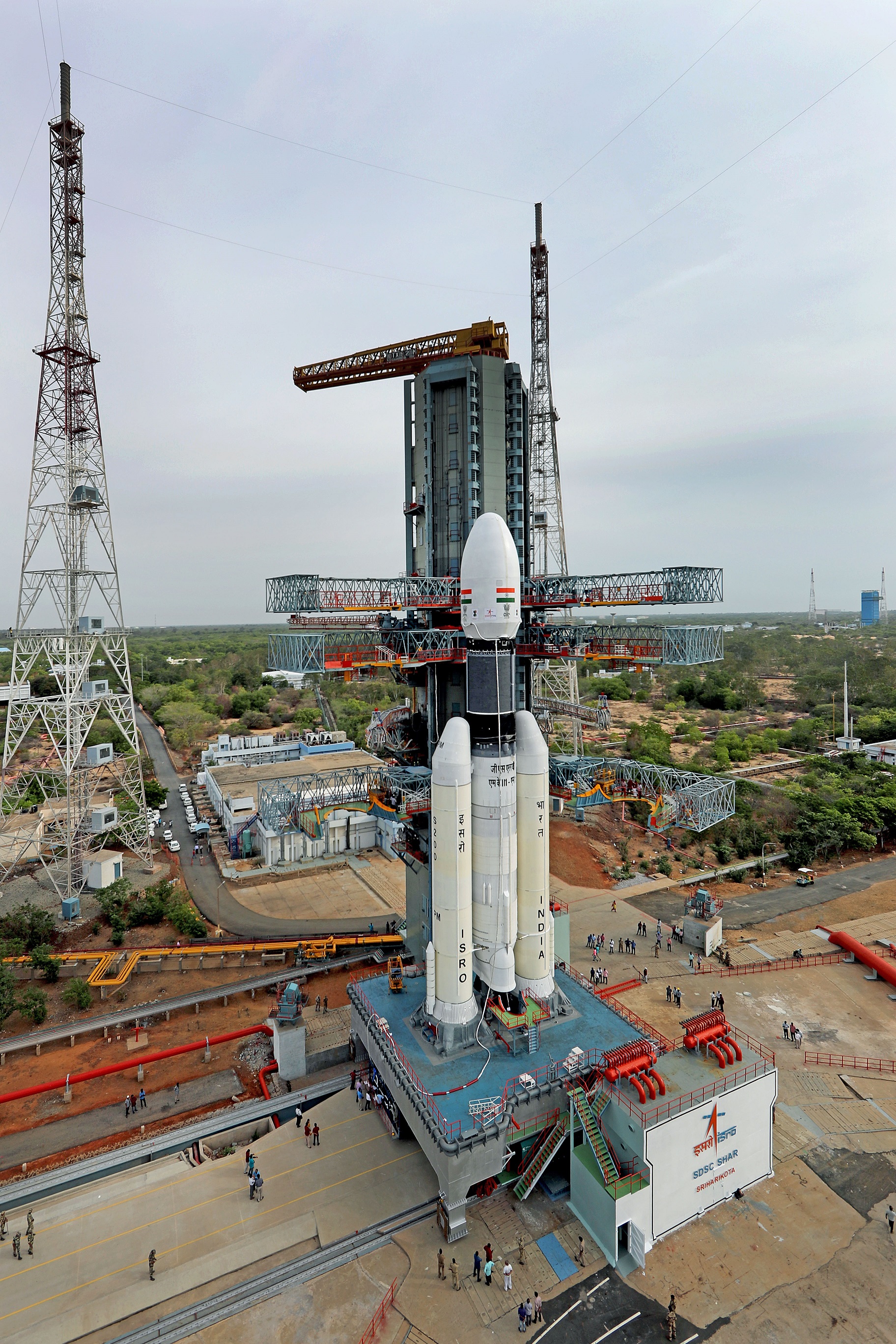
The GSLV Mk-III will carry Chandrayaan 2 to its designated orbit. This three-stage vehicle is India’s most powerful launcher to date, and is capable of launching 4-ton class of satellites to the Geosynchronous Transfer Orbit (GTO). Its components are S200 solid rocket boosters, L110 liquid stage and C25 upper stage. Chandrayaan-2 is a follow-on mission to the Chandrayaan-1 Mission. Chandryaan-2 comprises of an Orbiter, Lander (Vikram) and Rover (Pragyaan).
Unlike Chandrayaan-1, Chandrayaan-2 will attempt to soft land its Vikram module on the lunar surface and deploy a six-wheeled Rover, Pragyaan on the Moon to carry out several scientific experiments. The lift-off mass of Chandrayaan-1 was 1380 kg while Chandrayaan-2 weighs 3850 kg. Chandrayaan-2 aims to widen the scientific objectives of Chandrayaan-1 by way of soft landing on the Moon and deploying a rover to study the lunar surface.
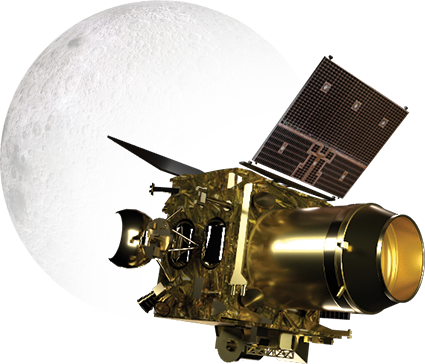
The Orbiter carries eight scientific payloads for mapping the lunar surface and study the exosphere (outer atmosphere) of the Moon. The Lander carries three scientific payloads to conduct surface and subsurface science experiments. The Rover carries two payloads to enhance our understanding of the lunar surface.
A passive experiment from NASA will also be carried onboard Chandrayaan-2. The mission life of Orbiter will be one year whereas the mission life of lander (Vikram) and rover (Pragyan) will be one Lunar day which is equal to fourteen earth days.
The soft landing of the Vikram lander on the Moon’s surface is likely to be on September 06, 2019. The Rover can travel up to 500 meter (half a kilometer) from the landing spot on moon
Some of the technological challenges of this mission are:
The propulsion system consisting of throttleable engines to ensure landing at low touch down velocity
Mission management – propellant management at various stages, engine burns, orbit and trajectory design
Lander Development – Navigation, guidance and control, sensors for navigation and hazard avoidance, communication systems and lander leg mechanism for soft landing
Rover Development – Roll down (from the lander) mechanism, roving mechanism (on the lunar surface), development and testing of power systems, thermal systems, communication and mobility systems.
A total number of 38 soft landing attempts have been made, so far. The success rate is 52%.
At the time of launch, the Chandrayaan 2 Orbiter will be capable of communicating with Indian Deep Space Network (IDSN) at Byalalu as well as the Vikram Lander. The mission life of the Orbiter is one year and it will be placed in a 100X100 km lunar polar orbit.
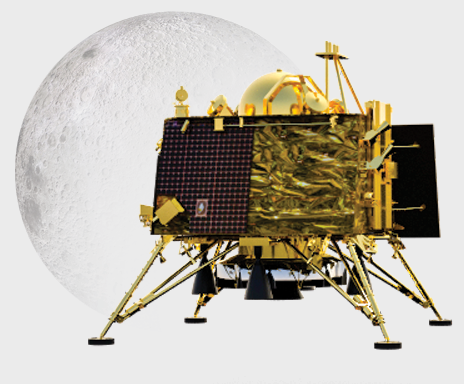
The Lander of Chandrayaan 2 is named Vikram after Dr Vikram A Sarabhai, the Father of the Indian Space Programme. It is designed to function for one lunar day, which is equivalent to about 14 Earth days. Vikram has the capability to communicate with IDSN at Byalalu near Bangalore, as well as with the Orbiter and Rover. The Lander is designed to execute a soft landing on the lunar surface.
Chandrayaan 2’s Rover is a 6-wheeled robotic vehicle named Pragyan, which translates to ‘wisdom’ in Sanskrit. It can travel up to 500 m (½-a-km) and leverages solar energy for its functioning. It can only communicate with the Lander.
Chandrayaan-2 will be launched from Satish Dhawan Space Center at Sriharikota on-board GSLV Mk-III and it will be injected into an earth parking 170 x40400 km orbit. A series of maneuvers will be carried out to raise its orbit and put Chandrayaan-2 on Lunar Transfer Trajectory. On entering Moon’s sphere of influence, on-board thrusters will slow down the spacecraft for Lunar Capture. The Orbit of Chandrayaan-2 around the moon will be circularized to 100×100 km orbit through a series of orbital maneuvers.
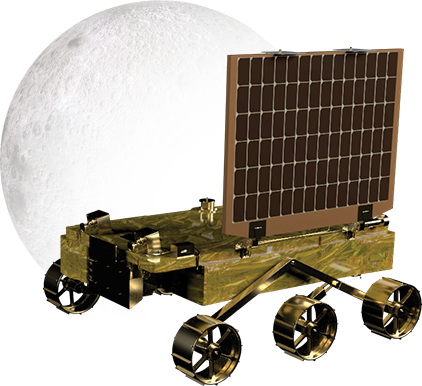
On the day of landing, the lander will separate from the Orbiter and then perform a series of complex maneuvers comprising of rough braking and fine braking. Imaging of the landing site region prior to landing will be done for finding safe and hazard-free zones. The lander-Vikram will finally land near South Pole of the moon on 6th September 2019. Subsequently, Rover will roll out and carry out experiments on Lunar surface for a period of 1 Lunar day which is equal to 14 Earth days. Orbiter will continue its mission for a duration of one year.
Chandrayaan-2 has several science payloads to expand the lunar scientific knowledge through detailed study of topography, seismography, mineral identification and distribution, surface chemical composition, thermo-physical characteristics of top soil and composition of the tenuous lunar atmosphere, leading to a new understanding of the origin and evolution of the Moon.
The Orbiter payloads will conduct remote-sensing observations from a 100 km orbit while the Lander and Rover payloads will perform in-situ measurements near the landing site.
For understanding of the Lunar composition, it is planned to identify the elements and mapping its distribution on the lunar surface both at global and In-situ level. In addition detailed 3 dimensional mapping of the lunar regolith will be done. Measurements on the near surface plasma environment and electron density in the Lunar ionosphere will be studied. Thermo-physical property of the lunar surface and seismic activities will also be measured. Water molecule distribution will be studied using infra red spectroscopy, synthetic aperture radiometry & polarimetry as well as mass spectroscopy techniques.
Key payloads of the Chandrayaan 2 are 6 . The first one is Chandrayaan 2 Large Area Soft X-ray Spectrometer which will study the elemental composition of the moon. The second one is Imaging IR Spectrometer which will study mineralogy mapping and water-ice confirmation. The third payload is Synthetic Aperture Radar L & S Band which will do the Polar-region mapping and sub-surface water-ice confirmation. The fourth will be Orbiter High Resolution Camera which will do the high-resolution topography mapping. The fifth will be Chandra’s Surface Thermo-physical Experiment which will study thermal conductivity and temperature gradient. And the sixth and last payload is the Alpha Particle X-ray Spectrometer and Laser Induced Breakdown Spectroscope which will study in-situ elemental analysis and abundance in the vicinity of landing site.
Orbiter payloads are Terrain Mapping Camera 2 (TMC 2), Chandrayaan 2 Large Area Soft X-ray Spectrometer (CLASS), Solar X-ray Monitor (XSM), Orbiter High Resolution Camera (OHRC), Imaging IR Spectrometer (IIRS) , Dual Frequency Synthetic Aperture Radar (DFSAR), Chandrayaan 2 Atmospheric Compositional Explorer 2 (CHACE 2) and Dual Frequency Radio Science (DFRS) experiment.
Vikram payloads are Radio Anatomy of Moon Bound Hypersensitive ionosphere and Atmosphere (RAMBHA), Chandra’s Surface Thermo-physical Experiment (ChaSTE) and Instrument for Lunar Seismic Activity (ILSA)).
Pragyaan payloads are Alpha Particle X-ray Spectrometer (APXS) and Laser Induced Breakdown Spectroscope (LIBS). A Passive Experiment called Laser Retroreflector Array (LRA) is also there.






































